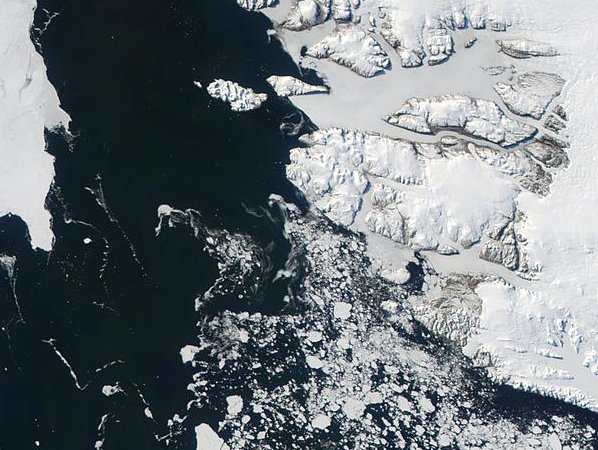This
MODIS (see footnote) satellite image was taken in May 2001 towards
the north of Baffin Bay, between Canada and Greenland. Note the
mountains of Greenland to the right and the large areas of solid
sea ice to the north. To the south the sea ice is broken into
large floes.
These
were dangerous waters for the Peterhead whalers because their
ships could easily be damaged as they navigated through the ice
fields. To make matters worse, when the wind was from the west
the ice would close up and whole fleets of ships could be trapped
for months on end.

Jacques
Descloitres, MODIS Land Rapid Response Team, NASA/GSFC
Baffin Bay, Northern Canada and Greenland
Footnote:
The MODIS (or Moderate Resolution Imaging Spectroradiometer) is
a key instrument aboard the Terra (EOS AM) and Aqua (EOS PM) satellites.
Terra's orbit around the Earth is timed so that it passes from
north to south across the equator in the morning, while Aqua passes
south to north over the equator in the afternoon. Terra MODIS
and Aqua MODIS are viewing the entire Earth's surface every 1
to 2 days, acquiring data in 36 spectral bands, or groups of wavelengths.
These data are designed to improve our understanding of global
dynamics and processes occurring on the land, in the oceans, and
in the lower atmosphere.